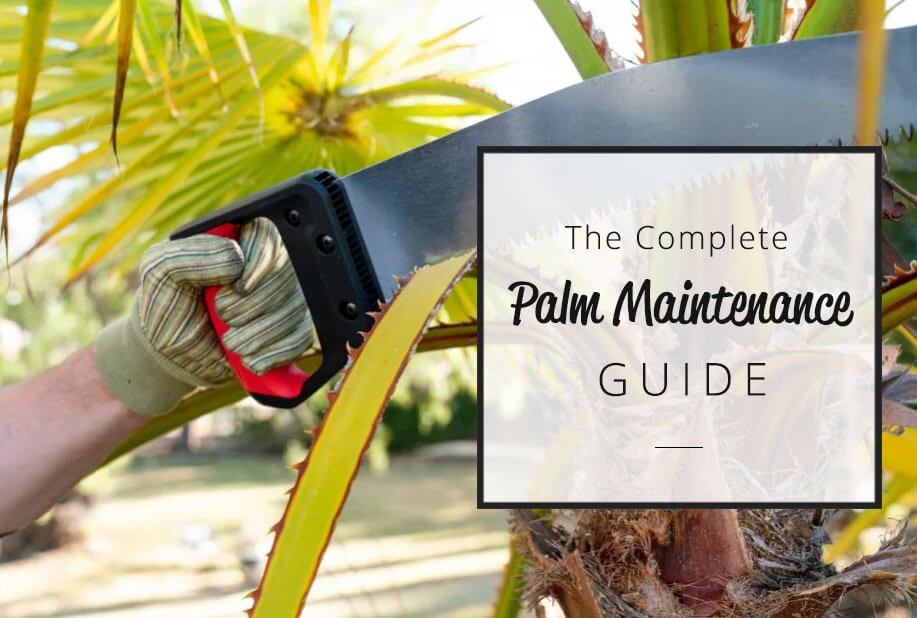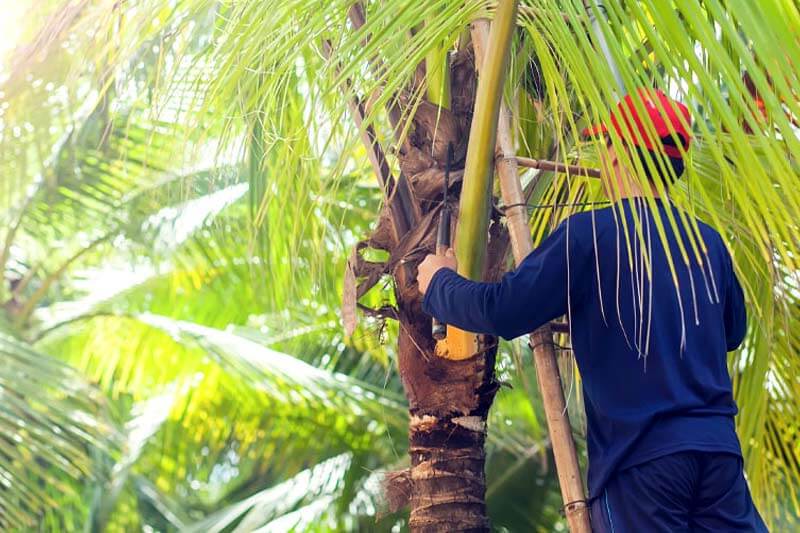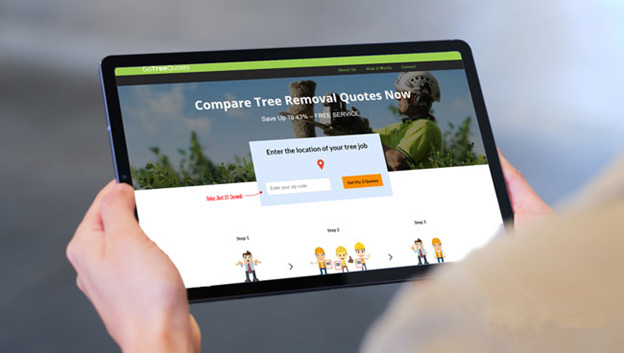Palm trees are famously recognized for their ability to imbue a tropical ambiance into a setting or property. They offer excellent shade for unwinding and enhance the air quality within your residence. Beyond their environmental advantages, numerous palm trees are also acclaimed for their significant health benefits.
Some of the ways of maintaining a palm tree are pruning, temperature control, light balance, nutrient balance, and soil care.
If you are planning to get a palm tree or looking for tips on how to maintain one on your property, then this is the article for you.

What we cover
ToggleHow to take care of a palm tree
Even though palm trees are relatively easy to maintain, it is not enough to just plant a palm tree and water it every now and then. Your maintenance practices will determine how fast it grows and how well it grows.
There are some factors to consider when planning your palm maintenance1 regimen. These factors range from the size of the tree to the location of the tree and many more.
Palm Tree Temperature Maintenance
Most Palm trees can survive in different climates and under different temperatures. Some may grow properly in high temperatures or warmer climates but die in the cold. Many palm trees are also able to survive cold weather.
Cold weather may slow down the tree’s growth and make it vulnerable to disease. You can protect your tree by placing a frost blanket over its fonds and spreading mulch to protect the roots. If you have an indoor palm, put on a space heater or wrap warm lights around the tree to add to the heat.
Light Balance for palm trees
While some palm trees require a lot of sunlight to keep them alive, while others do not. But more often than not your palm will like full sun for a good portion of the day.
pH maintenance for palm trees
Inappropriate pH levels can cause nutritional deficiencies in palm trees. It has different implications for different palm species such as preventing nutrient uptake in queen palms.
Low pH levels can cause calcium, phosphorus, and magnesium deficiencies. High pH levels can cause nitrogen, iron, and manganese deficiencies.
Highly acidic or alkaline soils will need to be adjusted if you want your palm trees to thrive. Agricultural lime and wood ashes increase pH levels and can be used to adjust highly acidic soils. However, this process can take up to a month before it neutralizes the soil.
Note: Wood ashes are used only on the soil surface, as they can damage roots if they find their way into the soil. To lower the pH levels of alkaline soils instantly, you should try to work aluminum sulfate into the soil.
Fertilizer application for palm trees
Some palm trees do require extra fertilization to boost nutrients. Palm root feeding involves the proper mixture of fertilizers and insertion into the deeper part of the soil to provide more nutrients such as iron and potassium to your palm.
Use fertilizer2 a few times a year to provide it with enough nutrients to fight off pests.
Pruning palm trees
Pruning is an integral part of tree maintenance. It helps to keep the tree healthy and keeps your garden looking great. Pruning involves cutting away dead fronds.
You can also remove green leaves but it is important not to remove any leaf above the horizon line of the palm tree.
Do palm trees need trimming?
Pruning is a recommended way to maintain palm trees. Palm tree trimming is a bad practice during which the healthy palm tree leaves may be cut off. This affects the nutrient balance and overall health of the tree. If you prefer a particular shape for your palm tree, you should look for species that naturally have those shapes instead.

Should I cut the dead leaves off my palm tree?
Cutting dead fronds on a palm tree is one of the essential processes of palm tree pruning3. This should only be done once a year as you need to ensure that all its oldest fronds have turned brown completely. This is when to be sure that there’s no green or life left on the fronds.
When removing a leaf, cut it as close to the trunk as possible. The remaining palm leaves’ base should eventually fall off, although it may take some years to.
Do not try to pull off a frond before it is ready to fall off, as you can damage the trunk.
Can you DIY your palm tree pruning?
You can decide to prune your palm tree on your own, but it is not recommended to trim any palm taller than 15ft. If you have a bigger palm you can use a pole saw, but I don’t recommend using a ladder. Working from heights while trying to trim trees can be very dangerous. You should hire a tree-trimming professional.
Palm tree maintenance near me
The fastest and easiest way to get 3 Estimates from the most affordable palm tree maintenance services near you would be by using this FREE service.
GoTreeQuotes quickly matches you with the 3 tree surgeons voted #1 by previous users in your area.
- Scroll up to the top of the page and enter your ZIP Code in the blue form at the top of the page.
- Give us a few details about your palm tree maintenance job plus some contact information.
- Your tree details are forwarded on to the closest three tree services all voted best priced who will also price your tree job.

Why do palm tree leaves turn brown?
Palm Trees require a quality amount of water, healthy rich soil, and a sufficient amount of sunlight to survive. These factors however need to be balanced accordingly to ensure proper palm tree maintenance.
Here are a few reasons why the leaves of your palm tree may be turning brown.
Water supply: Palm trees absorb water by collecting it in their roots and distributing it through the tree’s trunk, up to the fronds or leaves.
When the tree is low on water supply or is over-saturated with way more water than it can carry, the tips of the fronds may slowly start to lose color and become brown.
Sunlight: Every species of palm tree appreciates a good amount of sunlight. They are tropical plants but having too much direct sunlight may easily become a problem. It may burn the fronds of the palm, which eventually leads to their browning.
On the other hand, not providing your tree with enough sunlight may cause its fronds to also turn brown. An adequate amount of sunlight is needed to break down nutrients.
Nutrients: The discoloration of your palm fronds may be a result of overloading your soil with nutrients or not providing enough nutrients to the soil.
Many individuals make the mistake of over-fertilizing the soil when the palm is in its early growth and it may have an after-effect.
Others leave their palm to fend for themselves and this may result in a nutrient deficiency, especially in the presence of weeds and pests.
When is the best time to plant a palm tree?
It is best to plant palm trees at the end of spring or early summer. This time is the beginning of the main growing season and they will grow better in that season. It also gives them a good amount of time to establish a strong root system before winter, and this helps to prevent cold damage.
- T.K.Broschat, (2019) Palm Morphology And Anatomy. <https://edis.ifas.ufl.edu/publication/EP473> Accessed: 16-03-2024
- Rebecca Finneran, (2013) Fertilizing established perennial gardens. <https://www.canr.msu.edu/news/fertilizing_established_perennial_gardens_feed_em_and_weep> Accessed: 16-03-2024
- T.K.Broschat, (2020) Pruning Palms. <https://edis.ifas.ufl.edu/publication/EP443#TOP> Accessed: 16-03-2024














